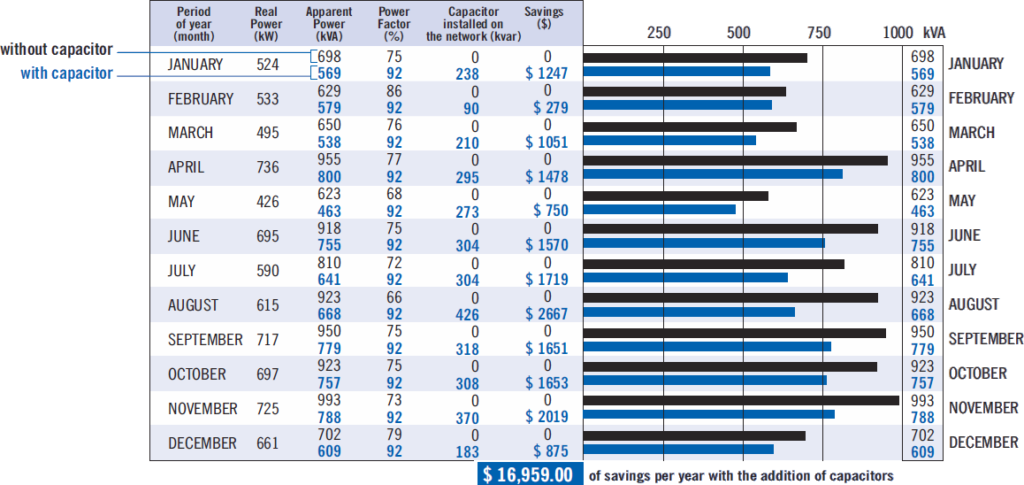Power Factor Correction
What Is Power Factor and Power Factor Correction?
Power factor is a measurement of how effectively your electrical system converts electric current (supplied by your power utility) into useful power output.
You may be able to find your current power factor indicated on your electricity bill. A low power factor means you’re not fully using the electrical power you’re paying for, creating significant penalties on your electricity bill, overloading your electrical distribution system, and increasing your carbon footprint.
Power factor can be improved (corrected) by installing power factor correction capacitors. A high power factor of 90% or more will result in more efficient electrical consumption and a lower utility bill.
Power Factor Formula

Benefits of Power Factor Correction
Reduced Utility Bills:
Power factor correction removes power factor penalties on your electricity bill.
Electricity tariffs for industrial and commercial customers have energy and demand rates. Some of these tariffs are structured to increase the cost of electricity if your power factor does not meet a minimum threshold (often 90%). Regardless of how your utility bills you for power, power factor correction can save you money.
Furthermore, a high power factor means your power system is not demanding significantly more power than it is actually using.
Increased System Capacity:
Power factor correction frees up capacity on your supply transformer. Adding power factor correction capacitors allows you to add additional load to your system without altering the kVA.
Improved Voltage Conditions:
Low voltage, resulting from excessive draw, causes motors to be sluggish and overheated. As power factor decreases, total line current increases, causing further voltage drop.
By adding capacitors to your system and improving power factor, you will improve voltage and therefore get more efficient motor performance and longer motor life.
Reduced Transmission Losses:
Losses caused by poor power factor are due to reactive current flowing in the system. These are watt-related charges that can be eliminated through power factor correction.
Reduced Carbon Footprint:
Power factor correction reduces the total current drawn from an electrical distribution network (which affects systems such as the power stations, distribution grid, and supply transformers). In so doing, the heat or transmission losses incurred on these systems are reduced, which reduces your carbon footprint.

Our Power Factor Correction Services
At AFER Inc. we increase your power factor by assessing your current electrical system and installing power factor correction capacitors, which act as reactive power generators and reduce the total amount of current your system draws from the grid.
The typical payback period for investments in our well-designed power factor correction systems is between 3-18 months. Our capacitor banks and power factor correction equipment have life expectancies of over 10 years, allowing you to save significant money over time.
This graph represents the summary of a yearly customer utility bill before and after the addition of Power Survey power factor correction equipment:

